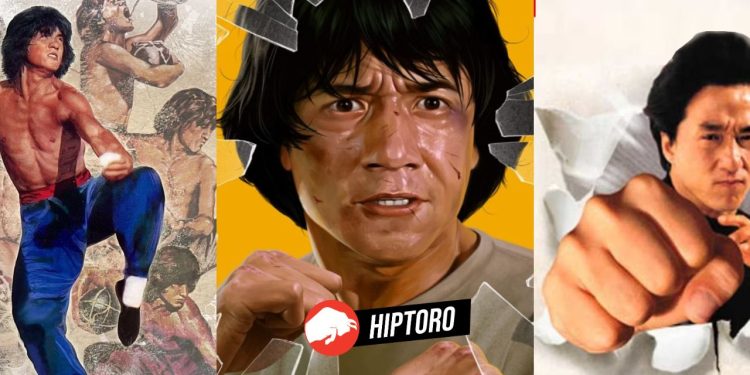Jackie Chan, an emblematic figure in the realms of action cinema and martial arts, has crafted a career that bridges East and West, blending comedy, action, and heartwarming narratives. This article delves deep into the heart of Jackie Chan’s illustrious filmography, highlighting the Top 10 movies that not only define his career but also showcase his evolution as a performer, a storyteller, and a cultural icon.
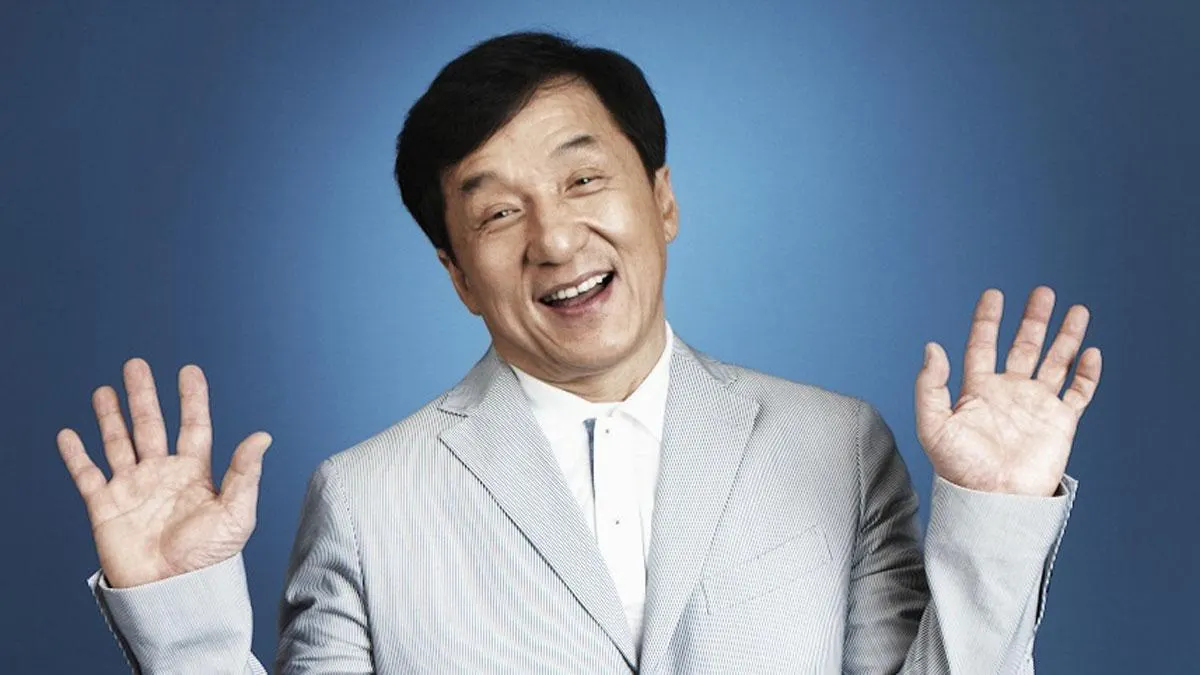
Through a detailed analysis of each film, we’ll explore the plots, character development, thematic elements, and performances. Moreover, we’ll discuss the cultural impact and critical reception of these films, drawing comparisons to other notable works in Jackie Chan’s career, when relevant. This exploration aims to provide not just a list of movies but a comprehensive understanding of Jackie Chan’s contribution to cinema.
1. Drunken Master (1978)
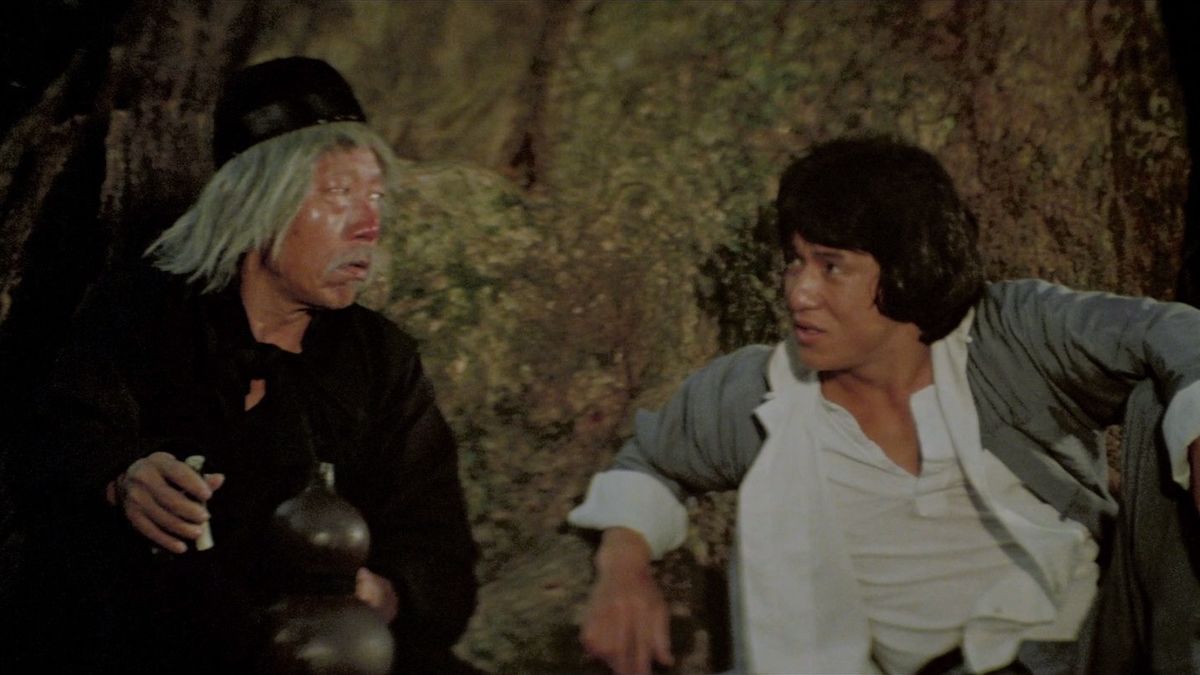
“Drunken Master,” directed by the venerable Yuen Woo-ping, represents a pivotal moment in cinematic history, particularly within the martial arts genre. This film not only catapulted Jackie Chan into stardom but also introduced global audiences to a refreshing amalgamation of martial arts and comedy, a fusion that was relatively unexplored at the time.
Set against the backdrop of late 19th-century China, the narrative follows the young and defiant Wong Fei-hung, who finds himself under the tutelage of the enigmatic and unconventional Drunken Master, Su Hua Chi. This partnership embarks on a journey filled with rigorous training sessions, leading to the mastery of the drunken boxing style, a unique and visually captivating form of martial arts characterized by its fluid, unpredictable movements mimicking a drunkard’s actions.

The plot intricately weaves comedy and action, setting a precedent for the genre. Wong Fei-hung, portrayed by Jackie Chan, embodies the quintessential underdog hero, whose journey from a rebellious youth to a martial arts prodigy captures the audience’s imagination.
Through this character, Chan was able to display a wide range of his abilities, blending acrobatics, martial arts, and slapstick humor seamlessly. This portrayal was a significant departure from the predominantly serious tone prevalent in martial arts cinema of the era, introducing a lighter, more accessible approach to the genre.
The film’s choreography is nothing short of revolutionary. Yuen Woo-ping’s innovative direction brought the drunken boxing style to life with a blend of intricate martial arts sequences and comedic elements, creating visually stunning and memorable fight scenes. These sequences not only demonstrate Chan’s physical prowess and agility but also highlight his exceptional ability to convey humor through action, setting a new benchmark for martial arts choreography.
The thematic depth of “Drunken Master” adds layers to its narrative, with perseverance, respect for tradition, and the triumph of the underdog being central to its story. These themes resonate deeply with audiences, transcending cultural and linguistic barriers, and contribute to the film’s enduring appeal. The movie’s portrayal of traditional Chinese martial arts and its underlying philosophies also serves to educate and inspire interest in Chinese culture and history, further enhancing its impact.
“Drunken Master’s” cultural significance extends beyond its immediate success. The film has been instrumental in shaping the martial arts genre, infusing it with a sense of humor and light-heartedness that was previously rare. This blend of comedy and action paved the way for future films, influencing not just Jackie Chan’s subsequent projects but also inspiring filmmakers and martial artists around the world.
The movie’s innovative approach can be seen as a precursor to the success of other comedic martial arts films, including “Snake in the Eagle’s Shadow,” which was released in the same year. Both films share thematic similarities, with underdog protagonists overcoming adversity through martial arts, but “Drunken Master” stands out for its focus on the drunken boxing style and its broader cultural impact.
Comparatively, “Snake in the Eagle’s Shadow” also marked a significant point in Jackie Chan’s career, showcasing his versatility and comic timing. However, “Drunken Master” is often credited with more definitively establishing the comedic martial arts genre, due in part to its unique blend of traditional martial arts, innovative choreography, and a compelling narrative arc. Together, these films represent a transformative period in martial arts cinema, with “Drunken Master” leading the charge in redefining the genre’s boundaries.
In conclusion, “Drunken Master” not only solidified Jackie Chan’s status as a martial arts superstar but also left an indelible mark on the genre, influencing generations of filmmakers and performers. Its legacy, characterized by its innovative blend of action, comedy, and cultural richness, continues to resonate with audiences worldwide, cementing its place as a seminal work in the history of martial arts cinema
2. Police Story (1985)
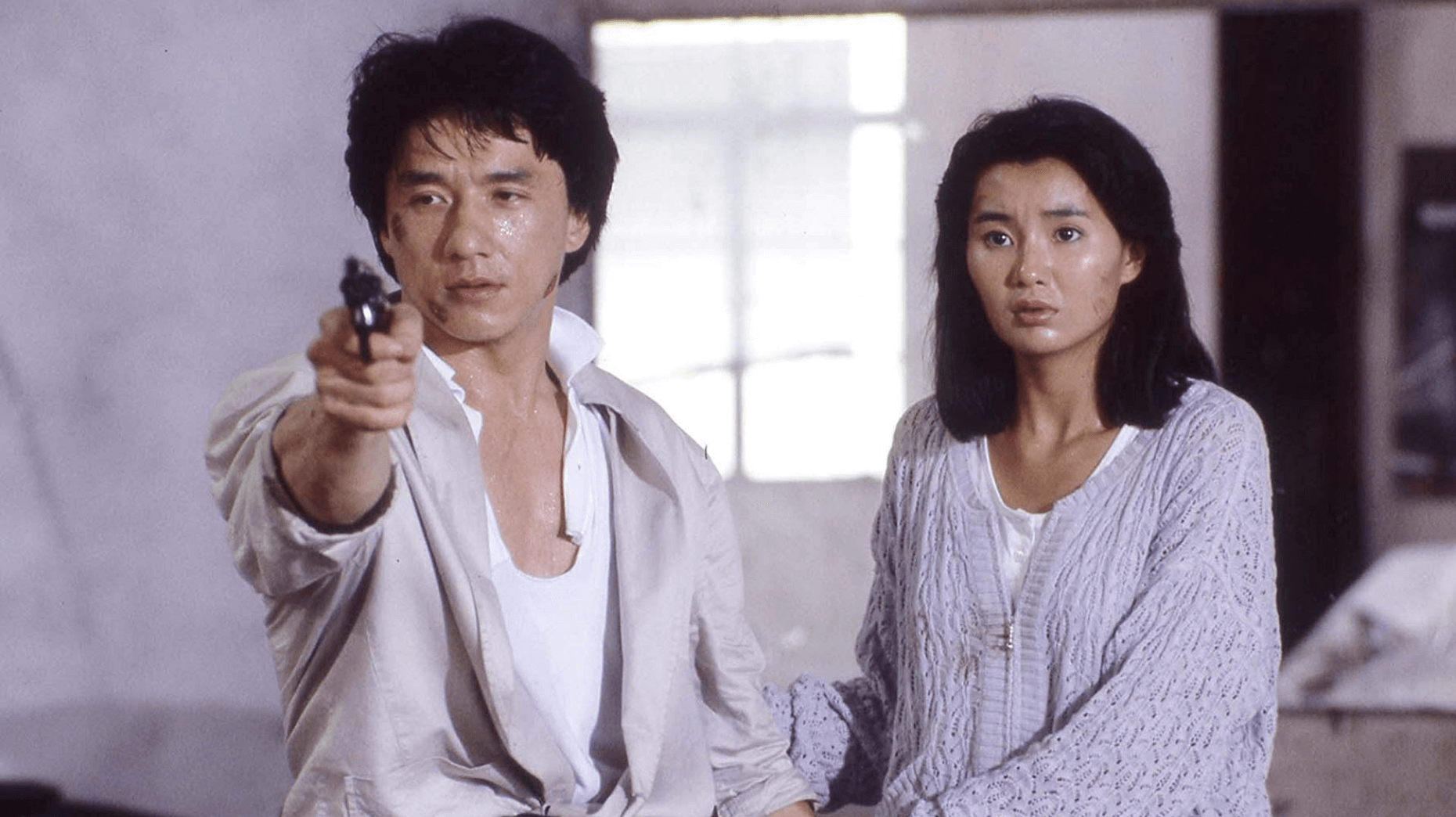
Directed and performed by Jackie Chan, “Police Story” is a tour de force of the action genre, establishing new benchmarks for both storytelling and stunt work in cinema. The narrative thrusts Chan Ka-Kui, a dedicated Hong Kong police detective, into the heart of a perilous mission to dismantle a drug cartel. The film’s brilliance lies in its innovative approach to action sequences, combining death-defying stunts with intricate choreography, all performed under Chan’s meticulous direction.
Innovative Action and Character Development:
“Police Story” stands as a testament to Jackie Chan’s dedication to his craft. The film’s action sequences, particularly the breathtaking bus chase and the climactic showdown in a shopping mall, set new standards for what audiences could expect from the genre. These stunts, performed without the safety net of CGI or stand-ins, showcase Chan’s unwavering commitment to realism and authenticity in action cinema.

Chan’s portrayal of Chan Ka-Kui adds depth to the high-octane narrative. The character’s unwavering dedication to justice, coupled with personal vulnerabilities, offers audiences a hero who is not only physically adept but also emotionally relatable. This complexity elevates “Police Story” beyond a mere showcase of stunts and action, weaving in elements of drama, romance, and humor.
Cultural Impact and Critical Reception:
Upon its release, “Police Story” received critical acclaim for its groundbreaking stunts and innovative cinematography. The film’s success was not limited to box office numbers; it reshaped the action genre, influencing countless filmmakers and establishing Jackie Chan as a force to be reckoned with in global cinema.
The cultural impact of “Police Story” extends beyond its technical achievements. The film’s narrative, highlighting the challenges faced by law enforcement officers, sparked conversations about the representation of police in media. Moreover, its success paved the way for sequels and inspired a new generation of action films that sought to emulate its blend of thrills and heart.
Comparison to Other Works:
Comparatively, “Supercop” (1992), another standout entry in the “Police Story” series, further explores the themes of duty and sacrifice. While “Supercop” expands the scope to include international espionage and collaboration, it retains the core elements that made “Police Story” a landmark film—innovative action, character depth, and a commitment to authenticity.
“Police Story” and “Supercop” together highlight Jackie Chan’s evolution as an actor and filmmaker. Through these films, Chan not only pushed the boundaries of the action genre but also established a narrative blueprint that balances adrenaline-pumping sequences with human drama and humor.
In closing, “Police Story” is more than just a film; it’s a pivotal moment in cinema that demonstrated the potential of action films to tell compelling, character-driven stories. Jackie Chan’s innovative vision and physical prowess left an indelible mark on the genre, inspiring filmmakers and captivating audiences around the world.
3. Project A (1983)
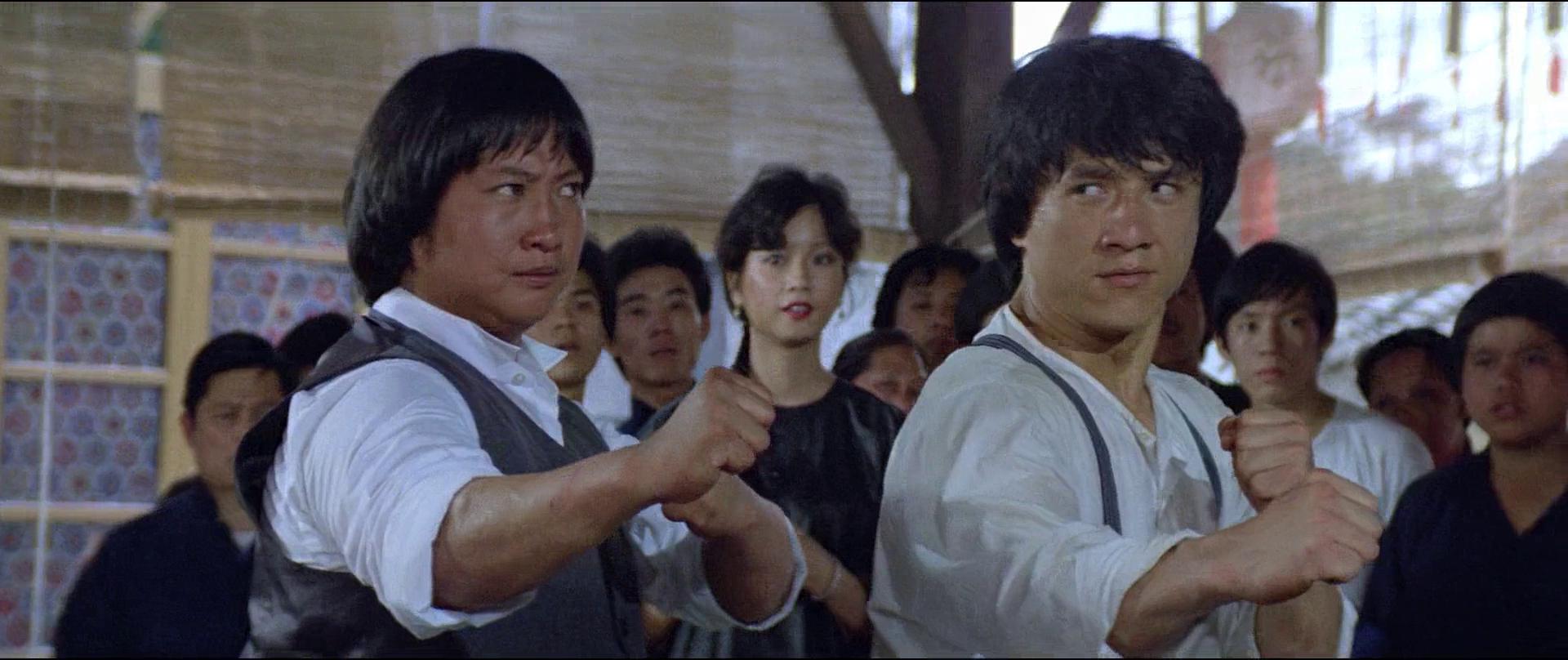
“Project A” represents a significant milestone in Jackie Chan’s filmography, blending historical drama with his signature action-comedy style. Set in the late 19th century, the film follows Sergeant Dragon Ma (Chan) in his relentless pursuit to rid the seas of pirates threatening the safety of Hong Kong. This film is celebrated for its attention to period detail, groundbreaking action sequences, and the comedic chemistry between its characters.
Blending History with Action-Comedy:
Chan’s decision to set “Project A” in a historical context allowed for a richer narrative backdrop, enabling elaborate set pieces and stunts that stand out in his oeuvre. The film is particularly noted for its meticulously choreographed action scenes, including the famous bicycle chase and the clock tower fall, echoing the silent film era’s slapstick comedy and stunt work.

The dynamic between Dragon Ma and his cohorts, as well as the pirates they battle, injects humor and warmth into the story, showcasing Chan’s talent for blending comedy with action in a way that enhances both elements. This film, therefore, not only serves as an action-packed adventure but also as a testament to Chan’s creativity and versatility as an actor and filmmaker.
Cultural Impact and Industry Influence:
Upon its release, “Project A” received acclaim for its innovative approach to the action genre, setting new standards for maritime action scenes and period piece adventures. The film’s success at the box office and among critics solidified Chan’s reputation as a filmmaker capable of transcending cultural and genre boundaries.
“Project A” also played a crucial role in influencing the direction of action cinema, inspiring filmmakers to incorporate historical elements into action-packed narratives. Its blend of humor, action, and period drama paved the way for future films that sought to mix genres and tones with similar dexterity.
Comparison to Subsequent Works:
When comparing “Project A” to later works like “Armour of God” (1986) and its sequel, it’s evident how Chan continued to refine his ability to merge different genres and settings with action-comedy. Each film builds on the foundation laid by “Project A,” expanding the scope of Chan’s adventurous storytelling while maintaining his signature blend of humor and action.
“Project A” and “Armour of God” both showcase Chan’s fascination with combining historical settings with contemporary action sequences. However, “Project A” remains unique in its focus on maritime piracy, a themeless commonly explored in Chan’s later works, which tend towards broader international treasure hunts and conspiracies.
In summary, “Project A” is a landmark film that not only highlights Jackie Chan’s prowess as a martial artist and comedian but also as a storyteller capable of weaving complex narratives with historical depth. Its legacy in the action-comedy genre and its influence on Chan’s subsequent films underscore its importance in his filmography.
4. Rumble in the Bronx (1995)
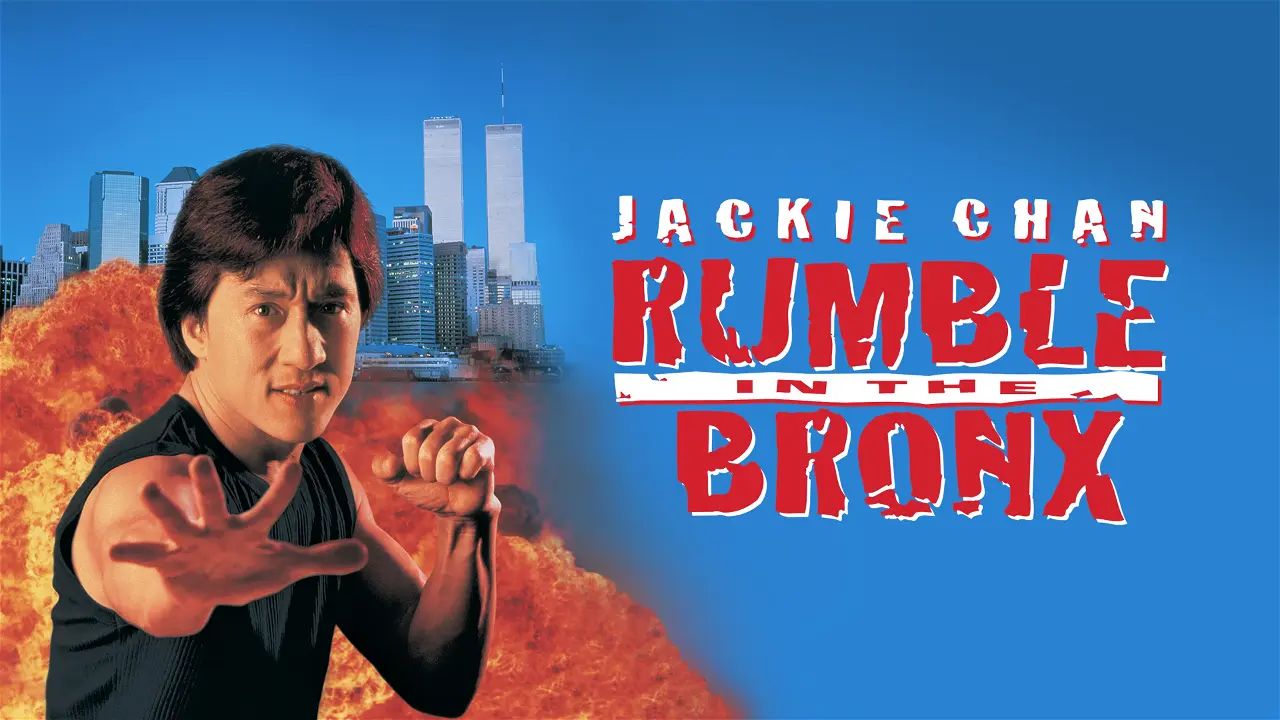
“Rumble in the Bronx,” directed by Stanley Tong, marked a pivotal point in Jackie Chan’s career, serving as his breakthrough in the American film market. The movie presents Chan as Ma Hon Keung, a Hong Kong police officer who visits New York for his uncle’s wedding, only to find himself battling local gangs and mobsters. The film is lauded for introducing Chan’s unique blend of martial arts and humor to a broader audience, setting the stage for his subsequent Hollywood success.

Broadening Horizons:
“Rumble in the Bronx” was a significant departure from the settings of Chan’s previous films, showcasing his versatility in adapting to different cultural contexts while maintaining his signature style. The movie’s success in North America was a testament to Chan’s universal appeal, blending fast-paced action sequences with comedic moments that transcended language and cultural barriers.
The film’s action sequences, notably the hovercraft chase and the gang fights, were innovative and daring, highlighting Chan’s commitment to performing his own stunts. These scenes not only entertained but also showcased Chan’s creativity and skill, earning him a new legion of fans worldwide.
Cultural Impact and Legacy:
The success of “Rumble in the Bronx” in the United States and globally marked a turning point for Chan, establishing him as a viable star in Hollywood and paving the way for future collaborations with American studios. The film’s reception demonstrated the international appeal of Chan’s action-comedy formula, influencing the development of similar cross-cultural projects in the industry.
Comparing “Rumble in the Bronx” to Chan’s later Hollywood films, such as “Rush Hour” and “Shanghai Noon,” it’s clear that the film laid the groundwork for his approach to action-comedy in a Western context. While maintaining his dedication to martial arts and physical comedy, Chan adapted his style to fit the expectations of a global audience, blending cultures and cinematic traditions in innovative ways.
In conclusion, “Rumble in the Bronx” not only served as Jackie Chan’s introduction to a wide American audience but also as a bridge between his work in Hong Kong cinema and his future successes in Hollywood. The film’s blend of action, comedy, and cultural exchange set a new standard for international action cinema, highlighting Chan’s role as a pioneer of the genre.
5. Rush Hour (1998)
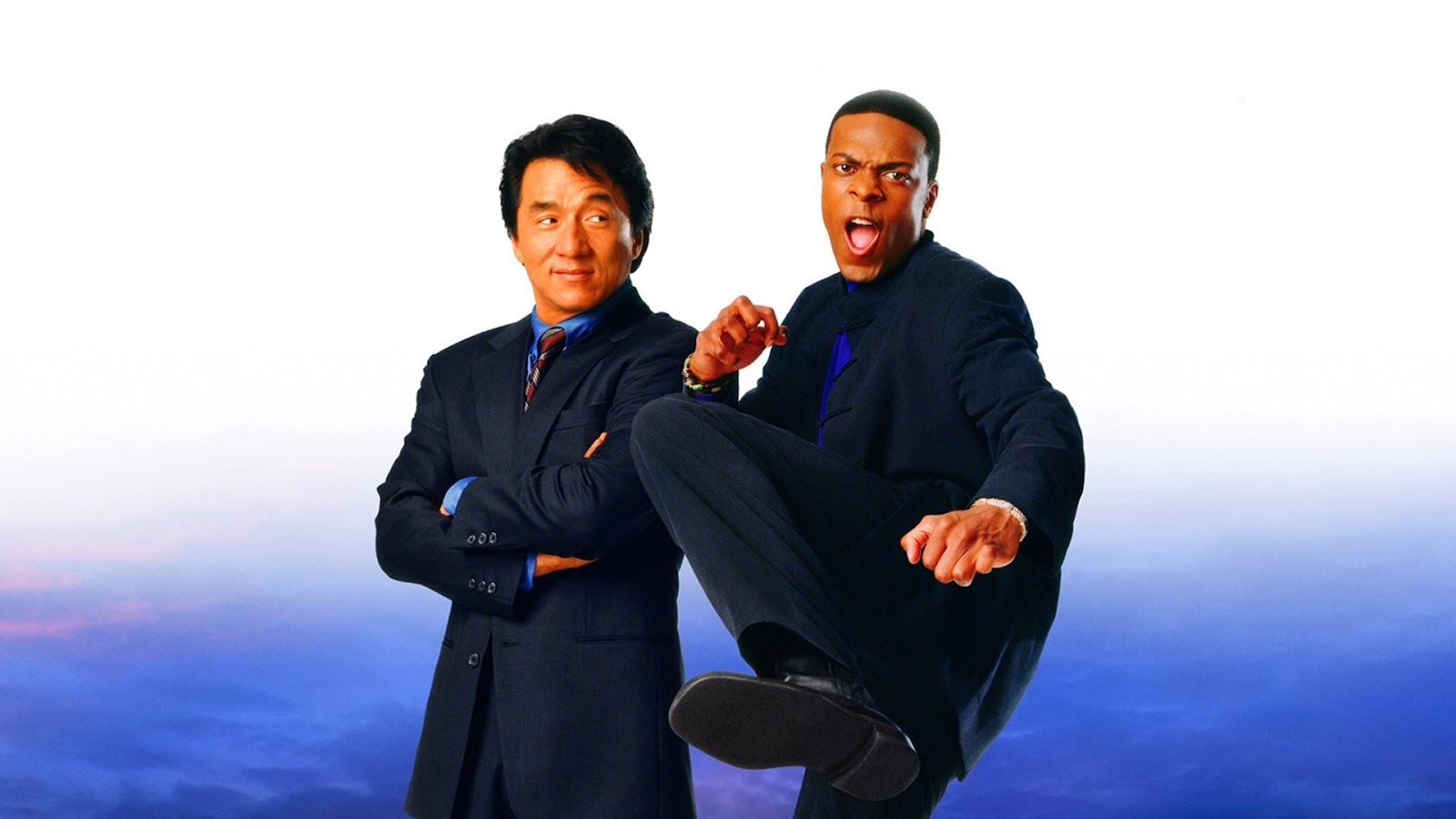
“Rush Hour” emerged as a defining film in Jackie Chan’s career, marking his solid establishment in Hollywood and showcasing his ability to lead a blockbuster action-comedy with cross-cultural appeal. The film, directed by Brett Ratner, pairs Chan with American comedian Chris Tucker, creating a dynamic duo that blends East-West cultural nuances with relentless action and humor.
The narrative follows Detective Inspector Lee (Chan) and Detective James Carter (Tucker) as they navigate a high-stakes kidnapping case, bridging the gap between their disparate backgrounds and policing styles.

Dynamic Duo: Cross-Cultural Chemistry:
The heart of “Rush Hour” lies in the chemistry between Chan and Tucker. Their characters’ initial friction due to cultural and procedural differences evolves into a genuine partnership, reflecting broader themes of unity and mutual respect. This dynamic is central to the film’s success, providing a vehicle for both action sequences and comedic exchanges that highlight Chan’s physical comedy and Tucker’s verbal wit.
The action sequences in “Rush Hour” maintain Chan’s signature blend of martial arts and acrobatics, adapted to fit the narrative’s Los Angeles setting. These scenes are carefully choreographed to integrate humor, showcasing Chan’s ability to use the environment creatively in combat situations.
Cultural Impact and Expansion of Global Cinema:
“Rush Hour” was not only a box office success but also a cultural phenomenon that broadened the appeal of action-comedy films across global audiences. It demonstrated the potential for integrating diverse cultural elements into mainstream Hollywood productions, paving the way for more inclusive storytelling in the industry.
The film’s reception underscored Chan’s versatility as an actor capable of bridging cultural divides, reinforcing his position as a global cinema icon. Furthermore, “Rush Hour” spawned two sequels, each further exploring the characters’ development and the deepening of their cross-cultural friendship, solidifying the franchise’s legacy in action-comedy cinema.
Comparison and Legacy:
Comparing “Rush Hour” to subsequent films in Chan’s Hollywood career, such as “Shanghai Noon” and its sequel “Shanghai Knights,” it’s evident that “Rush Hour” set a template for blending action with comedic elements in a cross-cultural context. These films further explore the dynamic between characters from different backgrounds, although “Rush Hour” remains unique in its urban setting and buddy-cop framework.
In summary, “Rush Hour” stands as a milestone in Jackie Chan’s filmography and in Hollywood’s evolution toward more globally resonant cinema. The film’s success lies in its ability to blend high-octane action, humor, and cultural exchange, leaving a lasting impact on the genre and on Chan’s international career.
6. Shanghai Noon (2000)
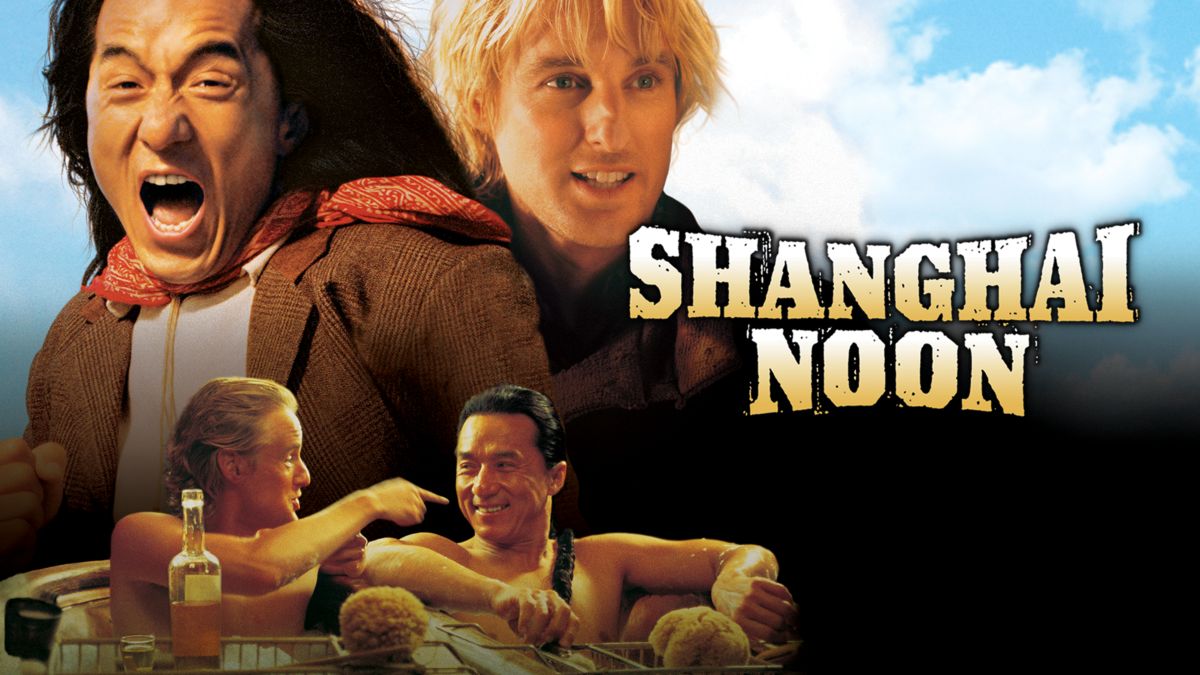
“Shanghai Noon” marked another significant entry in Jackie Chan’s Hollywood portfolio, blending the Western genre with martial arts to create a unique and entertaining cinematic experience. The film casts Chan as Chon Wang, a Chinese Imperial guard who finds himself on a rescue mission in the American West. Alongside Owen Wilson’s character, Roy O’Bannon, a small-time outlaw with grand ambitions, the duo embarks on an adventure filled with action, humor, and unexpected camaraderie.
East Meets West: A Fresh Take on the Western Genre:
“Shanghai Noon” revitalizes the Western genre by introducing martial arts into the classic American setting, thereby creating a cross-cultural exchange that serves as the film’s backbone. Chan’s character, Chon Wang (a play on the name John Wayne, a nod to the Western genre’s iconic star), brings Eastern martial arts to the cowboy-dominated landscape, offering a fresh perspective and innovative action sequences that stand out in both Chan’s career and the Western genre.

The dynamic between Wang and O’Bannon, much like the pairing in “Rush Hour,” is central to the film’s charm. Their evolving friendship, marked by cultural exchanges and mutual respect, drives the narrative forward, showcasing Chan’s ability to form compelling on-screen relationships that transcend cultural barriers.
Cultural Impact and Genre Fusion:
“Shanghai Noon” received praise for its clever integration of genres, proving that traditional Westerns could be successfully merged with martial arts comedy to appeal to a broad audience. The film’s success contributed to the growing trend of East-West collaborations in Hollywood, highlighting the universal appeal of blending diverse cinematic traditions.
The action sequences in “Shanghai Noon,” choreographed with Chan’s signature blend of acrobatics and combat, are tailored to fit the Western setting, incorporating elements like bar brawls and train robberies. This adaptation showcases Chan’s versatility and creativity, further cementing his status as an innovator in action cinema.
Comparison to Other Works:
When compared to “Rush Hour,” “Shanghai Noon” continues the theme of cross-cultural partnerships but places it within the context of the American frontier. This change of setting allows for different comedic and action dynamics, with the Western genre providing a rich backdrop for Chan’s martial arts expertise. Both films, however, underscore Chan’s ability to bridge cultural divides and highlight his appeal as a global star.
The sequel, “Shanghai Knights” (2003), builds upon the foundation laid by “Shanghai Noon,” transporting the characters to Victorian London and further exploring the comedic and action potential of Chan and Wilson’s partnership. This continuation reinforces the successful formula of combining historical settings with Chan’s unique action-comedy style.
In conclusion, “Shanghai Noon” stands as a testament to Jackie Chan’s influence on Hollywood, showcasing his ability to blend genres and cultural elements to create innovative and entertaining cinema. The film not only enriched Chan’s filmography but also contributed to the broader dialogue on cultural exchange in filmmaking.
7. Legend of Drunken Master (1994)
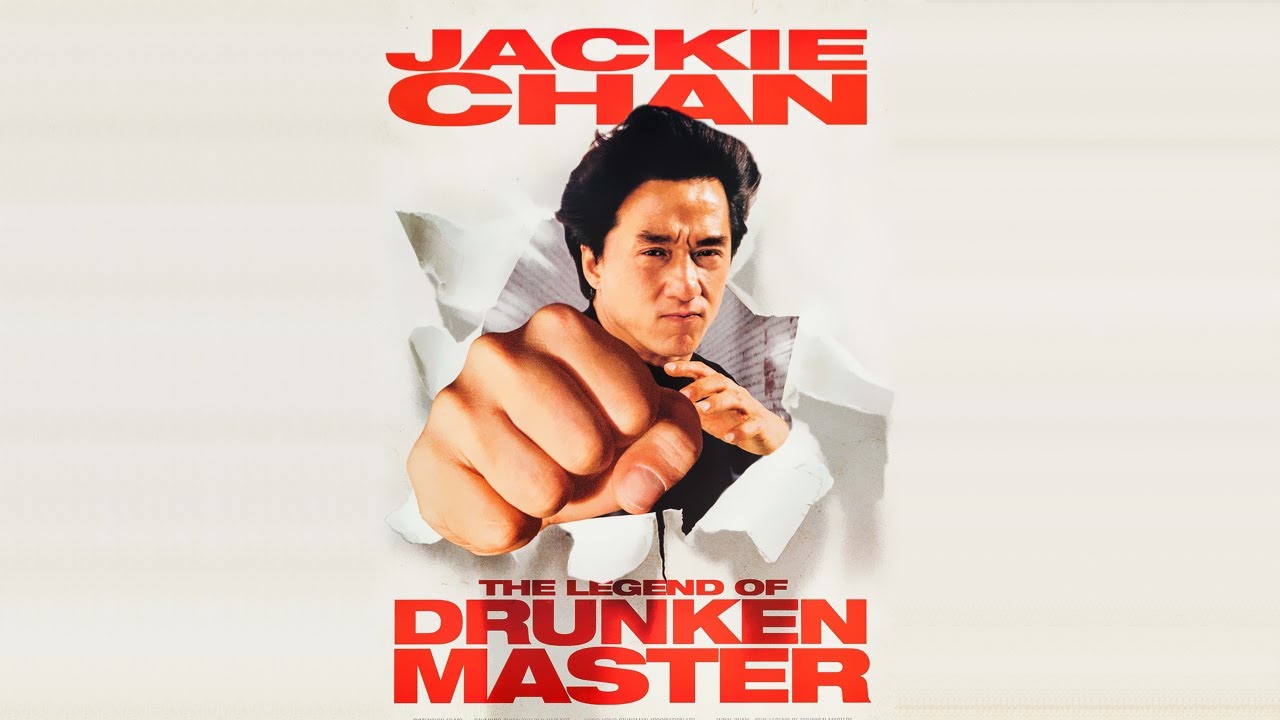
“Legend of Drunken Master” stands as one of Jackie Chan’s most acclaimed films, serving as a sequel to the 1978 classic “Drunken Master.” This film revisits the character of Wong Fei-hung, with Chan reprising his role as the martial arts prodigy known for his mastery of the drunken boxing style. The film is set against the backdrop of British colonialism in early 20th-century China, providing a rich historical context that enhances the narrative depth and thematic resonance of the story.
Mastery of Drunken Boxing: A Blend of Comedy and Action:
“Legend of Drunken Master” elevates the martial arts genre through its intricate choreography and the unique style of drunken boxing, which Chan executes with unparalleled skill and precision. The film’s action sequences are not only visually stunning but also imbued with a comedic flair that has become synonymous with Chan’s filmography. This combination of humor and action is epitomized in the climactic final battle, widely regarded as one of the greatest fight scenes in cinematic history.

The character of Wong Fei-hung allows Chan to explore themes of national identity, honor, and resistance against oppression, setting “Legend of Drunken Master” apart from its predecessor and other martial arts films. Through his portrayal, Chan delivers a performance that is both entertaining and emotionally resonant, showcasing his range as an actor and martial artist.
Cultural Impact and Critical Acclaim:
Upon its release, “Legend of Drunken Master” received widespread critical acclaim for its choreography, performances, and its innovative approach to the martial arts genre. The film is celebrated for its contribution to the global recognition of Chinese martial arts cinema and has been influential in shaping the action genre worldwide.
The film’s exploration of Chinese cultural heritage and its critique of colonialism resonated with audiences, further elevating its status as a culturally significant work. “Legend of Drunken Master” has since been recognized as a landmark film in Jackie Chan’s career and a masterpiece of action cinema.
Legacy and Influence:
“Legend of Drunken Master” solidified Jackie Chan’s reputation as a master of martial arts cinema, capable of blending intense action with comedy and drama. The film’s success helped to popularize the drunken boxing style, inspiring a generation of martial artists and filmmakers.
Comparing “Legend of Drunken Master” to other works in Chan’s filmography, it is clear that the film represents a pinnacle of his commitment to the craft of action choreography and cinematic storytelling. While other films such as “Who Am I?” and “Rush Hour” showcase Chan’s versatility and global appeal, “Legend of Drunken Master” remains a definitive showcase of his cultural roots and mastery of martial arts.
In summary, “Legend of Drunken Master” not only highlights Jackie Chan’s incredible talent and creativity but also serves as a poignant exploration of Chinese identity and resistance. Its enduring legacy in the realms of action and martial arts cinema is a testament to Chan’s impact on the industry and his ability to engage and inspire audiences around the world.
8. Armour of God (1986)
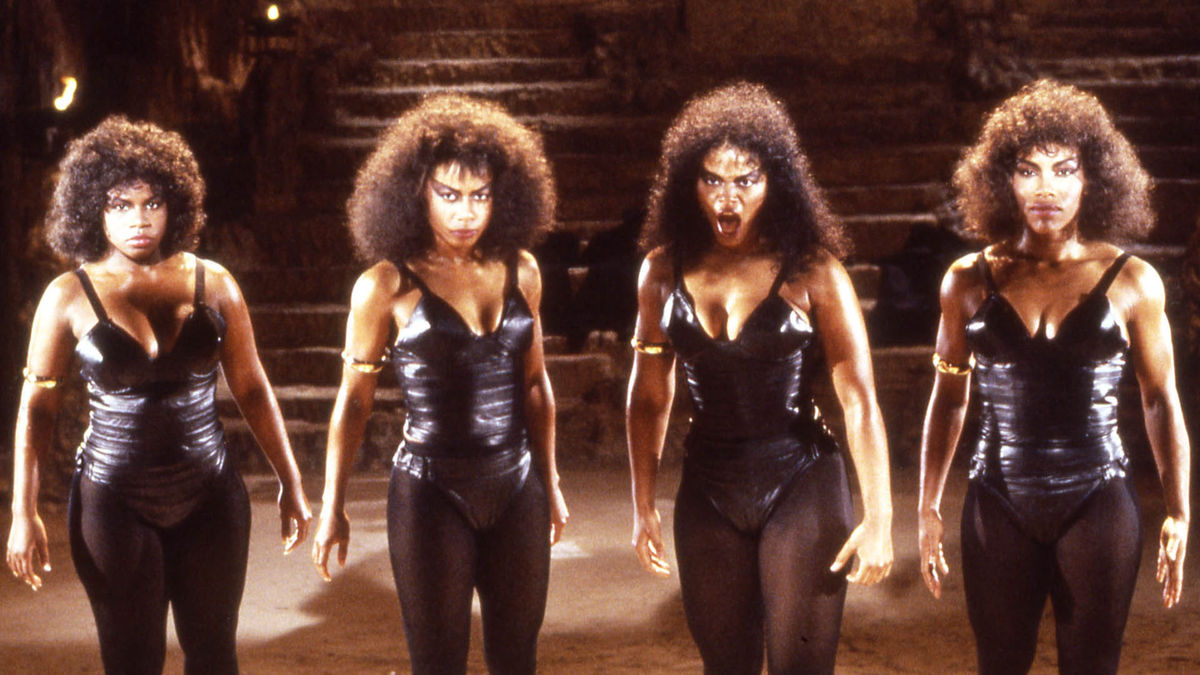
“Armour of God” is an action-adventure film that showcases Jackie Chan as Asian Hawk, a treasure hunter embarking on a quest to find mystical artifacts. This film marks a departure from the urban and historical settings typical of Chan’s earlier works, venturing into the realm of high-stakes adventure akin to the Indiana Jones series. With a blend of humor, action, and exploration, “Armour of God” stands out as a unique and entertaining entry in Chan’s extensive filmography.
An Adventurous Quest: Blending Genres and Styles:
In “Armour of God,” Chan introduces audiences to a new kind of hero, one who combines martial arts prowess with the cunning and bravery of a treasure hunter. This fusion of action-adventure and comedy was relatively novel at the time and showcased Chan’s ambition to push the boundaries of genre cinema. The film’s narrative, centered around the pursuit of sacred artifacts, allowed for a globetrotting adventure that brought together diverse cultural elements and set pieces.

The action sequences in “Armour of God” are meticulously choreographed, featuring Chan’s signature blend of martial arts, acrobatics, and inventive use of the environment. These sequences, particularly the climactic castle raid, are not only thrilling but also infused with comedic moments that lighten the mood and showcase Chan’s physical comedy skills.
Cultural Impact and International Appeal:
“Armour of God” enjoyed significant success in Asia and gained a cult following internationally, further cementing Jackie Chan’s status as a global cinema icon. The film’s blend of genres and the charismatic lead performance by Chan appealed to a wide audience, demonstrating the universal appeal of well-crafted action-adventure stories.
The film’s success led to a sequel, “Armour of God II: Operation Condor,” which continued the adventures of Asian Hawk, expanding on the themes and action of the original. These films together contributed to the growing interest in East-West cinematic collaborations, showcasing Chan’s role as a bridge between different cinematic traditions.
Legacy and Influence:
“Armour of God” and its sequel have left a lasting impact on the action-adventure genre, inspiring filmmakers to explore similar themes of treasure hunting and cross-cultural adventures. The films are notable for their combination of humor, action, and storytelling, a formula that Chan would continue to refine in his subsequent works.
Comparatively, “Armour of God” shares thematic similarities with Chan’s later Hollywood films, such as “Shanghai Noon” and “Around the World in 80 Days,” which also feature Chan in roles that blend action, comedy, and adventure in diverse historical and cultural settings. However, “Armour of God” remains distinct in its focus on the treasure hunter archetype and its influence on the action-adventure genre.
In conclusion, “Armour of God” is a testament to Jackie Chan’s ingenuity and creativity as a filmmaker. The film not only provided audiences with thrilling action and adventure but also showcased Chan’s ability to blend different cinematic traditions and genres. Its success and enduring appeal underscore Chan’s significance in the global film industry and his impact on the evolution of action cinema.
9. Supercop (1992)
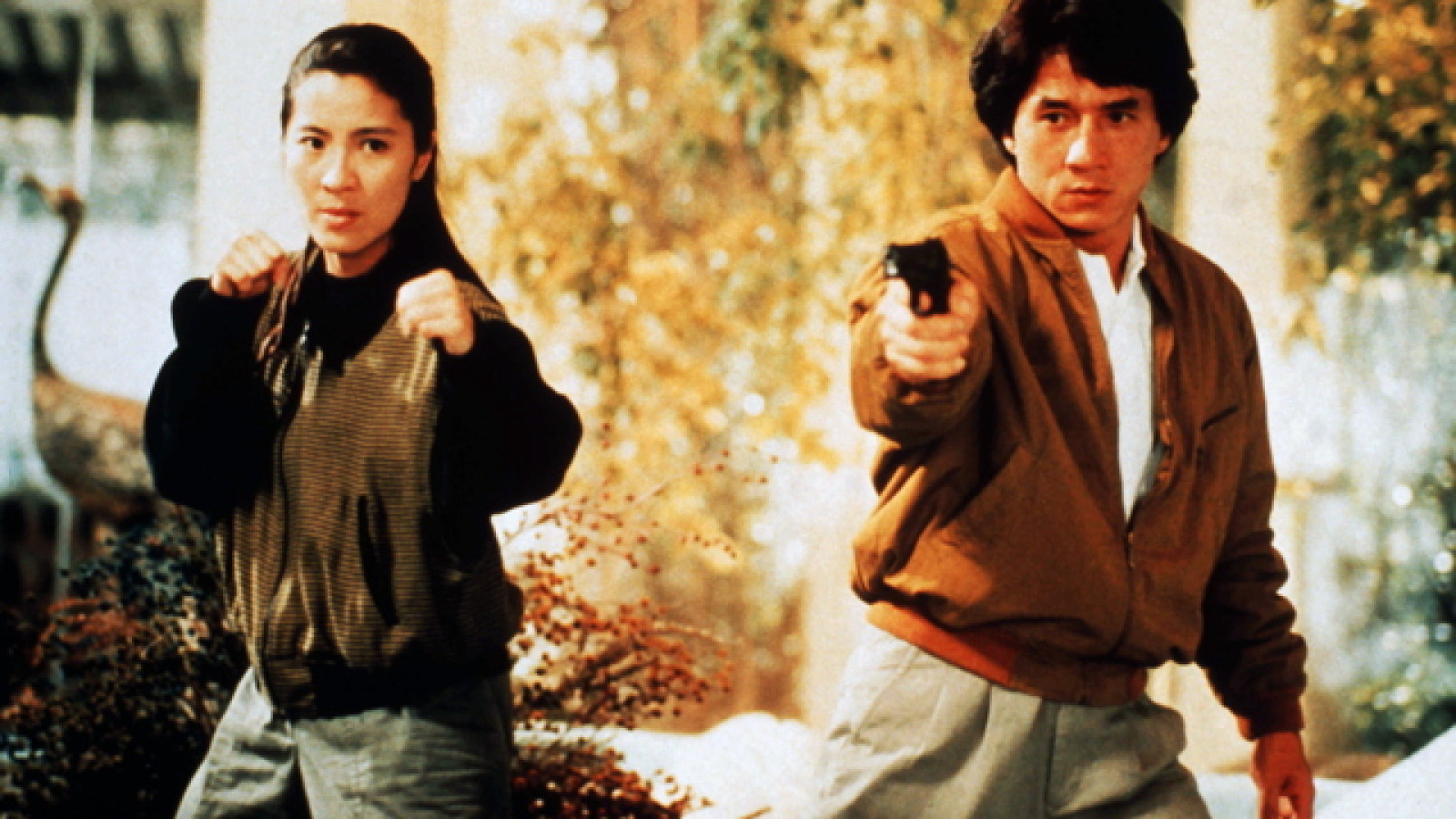
In “Supercop,” Jackie Chan reprises his role as Chan Ka-Kui (also known as Kevin Chan in some versions), a Hong Kong police detective with unmatched martial arts skills and a knack for getting into—and out of—trouble. This installment of the “Police Story” series sees Chan’s character teaming up with a Chinese mainland officer, played by Michelle Yeoh, to take down a drug cartel. “Supercop” stands out for its breathtaking stunts, cross-border collaboration themes, and the dynamic partnership between Chan and Yeoh.

A New Level of Action Choreography:
“Supercop” pushes the envelope of action choreography, featuring some of the most daring stunts in Chan’s career. The film’s action sequences, from the thrilling helicopter chase to the train-top fight, are meticulously crafted, showcasing Chan’s commitment to delivering authentic and exhilarating action scenes. These sequences are not just demonstrations of physical prowess but also serve to advance the plot and develop the characters, a hallmark of Chan’s approach to action cinema.
The partnership between Chan’s and Yeoh’s characters adds depth to the narrative, highlighting themes of trust, professionalism, and the clash of different law enforcement cultures. Yeoh’s character, a tough and skilled officer, stands toe-to-toe with Chan, making “Supercop” a significant film for showcasing strong female characters in action roles.
Cultural Impact and Global Success:
“Supercop” was a box office success, further establishing Jackie Chan as an international action star and paving the way for his subsequent Hollywood breakthrough. The film’s depiction of cooperation between Hong Kong and mainland Chinese law enforcement resonated with audiences, offering a message of unity and collaboration.
The global success of “Supercop” contributed to the increasing internationalization of Hong Kong cinema in the 1990s. It demonstrated the widespread appeal of action films that combined spectacular stunts, engaging narratives, and cross-cultural elements.
Legacy and Influence:
The film’s impact extends beyond its immediate commercial success, influencing the action genre and inspiring filmmakers around the world. “Supercop” is often cited as a benchmark for action choreography, setting high standards for stunt work and fight sequences in cinema.
Comparatively, “Supercop” can be seen as a precursor to Chan’s later Hollywood films, such as “Rush Hour” and “Shanghai Noon,” which further explore the theme of cross-cultural partnerships in law enforcement. However, “Supercop” remains unique in its focus on the collaboration between Hong Kong and mainland Chinese officers, offering a more nuanced exploration of this dynamic.
In summary, “Supercop” is a standout film in Jackie Chan’s illustrious career, showcasing his extraordinary talent as a martial artist, actor, and filmmaker. Its blend of thrilling action, compelling storytelling, and cultural resonance has left a lasting legacy in the world of action cinema, underscoring Chan’s influence on the genre.
10. Who Am I? (1998)
In “Who Am I?”, Jackie Chan plays a secret agent who survives a plane crash, only to find himself suffering from amnesia. Stranded in a remote African village with no memory of his identity or past, he embarks on a journey to uncover the truth about himself, which leads him into a web of espionage, betrayal, and action-packed confrontations. The film, co-directed by Chan, stands out for its blend of martial arts, humor, and an intriguing mystery plot, offering a different facet of Chan’s cinematic repertoire.
A Complex Narrative with Signature Action:
“Who Am I?” allows Chan to explore a more complex character while maintaining his signature action and humor. The film’s narrative provides a perfect backdrop for Chan to display his range as an actor, portraying vulnerability, confusion, and determination as his character seeks to unravel the mystery of his identity. This blend of action and character-driven storytelling differentiates “Who Am I?” from many of Chan’s other action-centric films.
The action sequences in “Who Am I?” are among Chan’s most inventive, particularly the iconic rooftop fight scene and the car chase through the streets of Rotterdam. These set pieces are not only thrilling but also creatively integrate elements of the environment, showcasing Chan’s genius for choreographing action that is both visually spectacular and integral to the plot.

Global Appeal and Cultural Impact:
“Who Am I?” was a global hit, reinforcing Jackie Chan‘s appeal as an international action star. The film’s diverse locations, from the plains of Africa to the urban landscape of Rotterdam, along with its international cast, contribute to its wide-reaching appeal, offering a cinematic experience that resonates with audiences worldwide.
The film further cements Chan’s reputation for performing his own stunts, a trait that has endeared him to fans and set him apart in the action genre. “Who Am I?” also touches on themes of identity and belonging, universal concerns that lend the film an emotional depth beyond its action sequences.
Legacy and Comparison:
While “Who Am I?” shares the action and comedy elements prevalent in Chan’s filmography, it stands out for its exploration of a more introspective narrative. This film can be compared to “The Tuxedo” (2002) and “The Medallion” (2003), where Chan also merges action with elements of science fiction and fantasy, though “Who Am I?” remains unique in its focus on the theme of self-discovery.
In summary, “Who Am I?” not only highlights Jackie Chan’s capabilities as an actor and martial artist but also showcases his skill as a storyteller. The film’s successful blend of genre elements, combined with its engaging plot and dynamic action sequences, solidifies its place in Chan’s distinguished career and the broader action cinema landscape.


